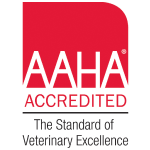You’re at the dog park, and everything seems fine—tails are wagging, the sun is shining, and then suddenly, a dog snaps. Maybe it’s your dog. Maybe it’s someone else’s. Either way, it’s scary, and it often feels like it came out of nowhere.
But here’s the thing: dogs almost always give us signals before a bite. The trouble is, we’re not always trained to see them.
Understanding your dog’s body language and behavior is one of the best ways to prevent bites—keeping both pets and people safe. Read along to identify the signals early and know what to do when you spot them.
Why Dogs Bite—It’s Not Always “Bad Behavior”
It’s unsettling to think your dog might bite, but biting is rarely a sign of a “bad” dog. More often, it’s a last resort—a way for a dog to communicate when they feel scared, hurt, or overwhelmed and their earlier warning signs went unnoticed.
Most bites happen for one of four common reasons:
- Fear or anxiety – Dogs who feel threatened or cornered, especially in unfamiliar situations or around strangers, may bite out of self-defense.
- Pain or illness – A normally sweet dog may react aggressively if they’re hurting. Health issues like arthritis, dental pain, or ear infections can make them sensitive to touch.
- Resource guarding – Some dogs instinctively protect food, toys, or favorite people. They may growl or bite if they think something valuable is being taken away.
Overexcitement or frustration – High-energy dogs, especially younger ones, can get so worked up during play or when restrained that they redirect that energy into nipping or biting.
Most dogs don’t want to bite—they give warning signs first. By learning those signals, using gentle training, and getting early vet support, you can help your dog feel safer and prevent bites before they happen.
Key Warning Signs in Dog Body Language
Dogs don’t speak with words, but they’re constantly communicating how they feel—especially when something isn’t quite right. Before a dog ever bites, they typically give off a series of signals that they’re stressed, uncomfortable, or afraid. The challenge is that many of these signals are subtle and easy to miss, especially if you’re not familiar with canine body language.
By learning what to watch for, you can step in early and help your dog feel safer—while preventing a situation from escalating.
Here are some key signs that a dog may be nearing their threshold:
- Yawning or Lip Licking: Often signs of stress, not just tiredness—your dog may be trying to calm themselves.
- Turning Away: A subtle request for space. Ignoring it can lead to more serious warnings.
- Freezing or Stiffening: A major red flag. The dog may feel trapped and ready to defend themselves.
- Whale Eye: Seeing the whites of the eyes signals tension or discomfort—often during guarding or when cornered.
- Growling, Snapping, or Raised Hackles: Clear warnings. Don’t punish—these are signs your dog feels unsafe.
Not all dogs growl or bark before biting—some stay silent due to fear or past experiences. That’s why it’s important to watch your dog’s full body language, including posture, eyes, and movement. If you notice signs of discomfort, especially in specific situations, don’t ignore them—your dog is trying to tell you something.
High-Risk Situations to Watch For
Even the kindest, most well-behaved dog has limits. Certain everyday situations naturally increase a dog’s stress level—and when their warning signs are missed or ignored, the risk of a bite goes up. These situations don’t make a dog aggressive; they simply highlight moments when dogs may feel uncertain, vulnerable, or defensive.
By being more aware of these high-risk moments, pet owners can take steps to prevent misunderstandings and keep everyone safe.
- Petting Unfamiliar Dogs: Reaching over a dog’s head can feel threatening. Let the dog come to you and always ask the owner first.
- Waking a Sleeping Dog: Sudden touch can startle dogs, especially older or anxious ones. Wake them gently with your voice instead.
- Approaching During Mealtime or Chewing: Some dogs guard food or toys instinctively. Give them space and avoid reaching for items they’re enjoying.
- Children Interacting With Dogs: Kids may overwhelm dogs without realizing it. Always supervise and teach respectful, calm behavior.
- Painful or Sick Pets: Illness or injury can make dogs reactive. If behavior changes suddenly, schedule a vet check to rule out medical causes.
If your dog starts growling, snapping, or avoiding contact during grooming or play, don’t assume it’s a behavior problem—it may be pain.
How to Prevent Dog Bites
Dog bites can be upsetting, but the encouraging news is that many are entirely preventable. With a thoughtful approach and a little guidance, pet parents can reduce risk and help their dogs feel safe, confident, and supported in a variety of situations.
Whether your dog is shy, excitable, or protective, these strategies can help you create a safer environment for both pets and people:
- Teach Children and Guests Dog-Safe Behavior
Most bites happen when a dog’s boundaries are crossed. Teach kids and visitors to avoid hugging, grabbing, or disturbing dogs while they’re sleeping or eating. Let dogs approach on their own and set up a quiet “safe zone” where your dog can retreat if needed.
- Respect Your Dog’s Comfort Zone
Pay attention to stress signals like yawning, turning away, or lip licking. Don’t force interactions—give your dog space when they seem uneasy to prevent fear-based reactions.
- Use Positive Reinforcement Training
Avoid punishment-based training, which can increase fear. Reward calm, desired behaviors to build trust and confidence. Ask us for Bloomington-area trainer recommendations who use gentle, fear-free methods.
- Don’t Ignore Behavior Changes—Seek Help
Growling or snapping often signals discomfort. Rule out medical issues first, then work with your vet or a trainer to address underlying causes and create a behavior plan.
- Use Calming Tools When Needed
Some dogs need extra support in stressful situations. Calming chews, pheromone diffusers, or anxiety wraps can help. Browse our online pharmacy for safe, vet-approved options, and always consult your vet before starting a new product.
Preventing dog bites isn’t about discipline—it’s about creating safety, building trust, and recognizing when your dog is asking for space. With patience, education, and support, most bite risks can be avoided.
What to Do If You Notice These Signs
If your dog suddenly freezes, growls, avoids eye contact, or starts lip-licking in a stressful situation, it’s easy to feel worried—but noticing these early signals is a good thing. It means your dog is communicating discomfort before things escalate. Your next steps can make all the difference in helping them feel safe and understood.
- Give Your Dog Space: Step back calmly and let your dog retreat. Avoid crowding or trying to correct them—they need room to feel safe.
- Don’t Punish Growling: Growling is a warning, not bad behavior. Don’t scold—remove your dog from the situation and take note of what triggered it.
- Identify the Trigger & Talk to Your Vet: Track when and where the behavior happens. Many issues stem from pain or illness, so a veterinary exam is a great first step.
- Get Professional Help if Needed: If the behavior continues, we can help create a gentle training plan and refer you to trusted local behavior experts.
Early intervention gives you the best chance at success—and helps your dog feel safer and more secure. Addressing these issues with patience and expert support can improve your dog’s quality of life and bring peace of mind to your home.
A Safer, Calmer Home for Everyone
Recognizing your dog’s signals is key to preventing bites and building a more trusting bond. If you’ve noticed behavior changes or signs of stress, our team at South Hyland Pet Hospital is here to help. Call us at (952) 884-1868 or request an appointment online—we’ll work with you to find the cause and create a plan that supports your dog’s emotional and physical wellbeing.
Image credit: Envato



